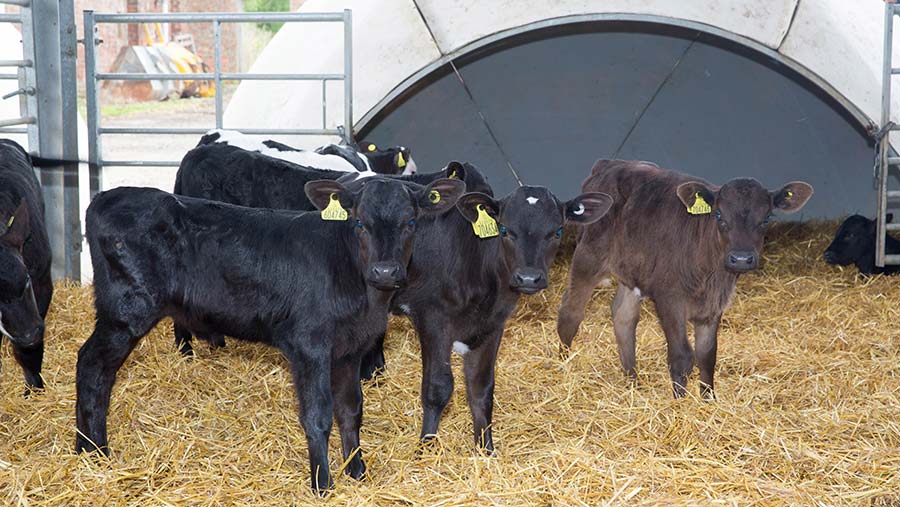7 risk factors of pneumonia in calves and how to avoid them
 © Tim Scrivener
© Tim Scrivener Buying calves from multiple sources and feeding calves only once a day could be putting animals at risk of getting pneumonia, a study has found.
AHDB assessed data from eight calf rearers supplying Meadow Quality, in order to investigate the common risks factors associated with pneumonia.
Pneumonia is a respiratory disease caused by inflammation of the air sacs in the lungs.
Records from 3,000 calves showed the following trends:
1. Calves typically got pneumonia 10 days after arrival and peak pneumonia incidence occurred between November and April.
2. Calves that had to be treated for pneumonia spent six days longer on farm compared with those that didn’t have pneumonia
See also: £1m project aims to reduce disease and integrate dairy beef calf chain
3. Lighter calves (≤60kg) on arrival were more likely to be treated for pneumonia compared with heavier ones (>70kg) and spent longer on farm.
4. Calves fed once a day were treated more (55%) than machine-fed calves (45%), although housing confounded this.
5. Igloos were better than sheds at protecting calves against cold weather.
6. Pneumonia incidence increased if calves came from multiple sources.
7. Dairy bull calves had a higher incidence of pneumonia than other breeds at 58%, possibly due to lack of hybrid vigour.
Take-home messages
- Reduce batch size to 30 calves and buy from fewer sources.
- Liaise with vendor to ensure calves have had adequate colostrum.
- Work with your vet to develop a health plan for high-risk calves.
- Feed calves more frequently and keep them warm.
